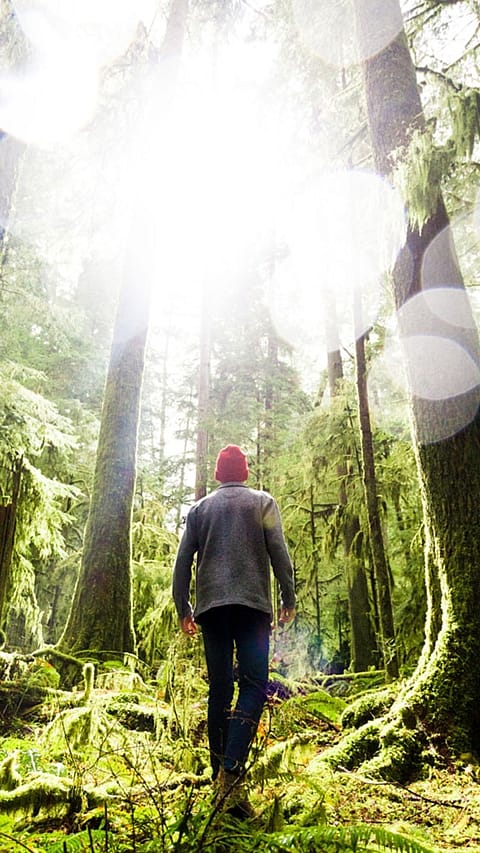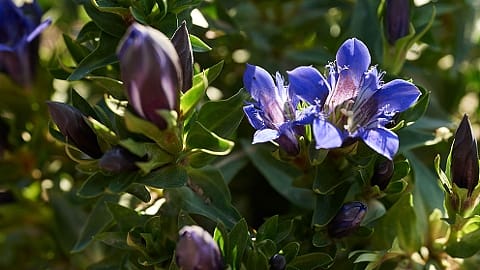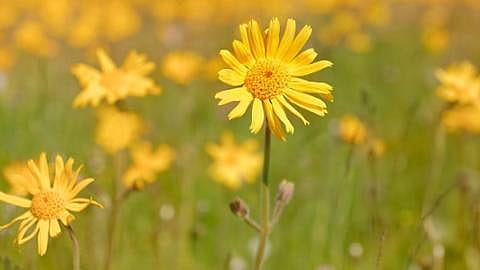Why the Scent of Trees is so Relaxing
Even for those who have never step foot in an actual forest, most of us know what a forest looks like through photographs or films showing wooded areas in places like Canada, Japan, Siberia or the Black Forest in Germany. Forests have an air of mystery about them for us humans, for whenever we happen to be in their midst, it is usually only as temporary visitors.
|
Trees have a strong influence on the earth’s climate. Trees clean the air. When it rains in the forest, not only does it make a beautiful sound, it also refreshes the air, releasing a very special scent that stirs our senses. The scent of the forest is quite unique. What used to be more of a feeling is now proven by science, which calls it the “biophilia effect”. Going into the forest, breathing in the scent of the forest, and letting the greenery take effect can have a healing effect on us humans. But to reduce the impact of the forest to mere “effects” does not do justice to this holistic experience. Yearning for nature According to UN estimates, by 2050 two out of every three inhabitants of the earth will live in an urban environment. There are currently 31 megacities worldwide – by the year 2050 there will likely be 50 such cities. Each of these urban hotspots has more than 10 million inhabitants. Not only the mass of people, but also increasing digitalization is causing human life to move further and further away from nature. It’s no wonder that many people yearn for a connection to nature, to experience nature. Surrounded by trees, humans are able to experience something vast and complex. Something that can be hard for us to put into words. The Japanese speak of “shinrin-yoku” meaning “forest bathing”. This does not mean bathing in a lake or stream tucked away among the shrubs and bushes. It is the immersion in nature with all your senses. A mindful stroll through nature, without purpose except to be one with the forest atmosphere, collecting sensory impressions, reducing stress – this is what “shinrin-yoku” is all about. In Japan, forest therapy has been integrated into the state healthcare system, ever since people became aware of its many positive effects. Worldwide research Not only in Japan, but worldwide scientists are researching what is so beneficial about the forest when we are immersed in its pure, green vegetation. Could it be the comparatively low temperatures that increase physical performance? Do the special lighting conditions play a role? Or is it the colour green, which has been shown to have a calming effect on the vegetative nervous system and promotes healing processes? Perhaps the springy forest floor, which is particularly good for joint and back problems? Or the particular sense of tranquillity it exudes? More trees, less disease? A study shows that 20 minutes spent in a natural, green environment is enough to noticeably reduce our level of stress hormones. The cortisol level is lowered, while certain enzymes, which are increasingly released during stress, are broken down. Researchers call it a “nature pill” in the scientific journal “Frontiers in Psychology”, and their data is part of numerous findings on the subject of forests and the human psyche. In the 1980s, for example, the Swedish researcher Roger Ulrich discovered that patients who looked out of the hospital window onto a scenic green landscape after an operation needed less painkillers and recovered more quickly. Later, US environmental psychologist Marc Berman discovered that residents of green areas suffered less from cardiovascular disease and diabetes. Nature leaves us in peace – bathing in the forest connects us with ourselves In the forest there is nothing to buy, there are no short-term temptations and even goals set by others appear more distant instead of exerting more pressure. Right in its midst, we become part of it. We feel elevated and grounded at the same time. Where else can the interplay of becoming and passing be experienced so intensively? Dead wood lies about the forest floor, while young clover grows in the fertile ground it creates. In the midst of this natural cycle, a transformation takes place inside us. |
The scent of the forest appeals to our senses
|
“In the woods, our communicating immune system works by communicating with trees and other plants,” writes the Austrian biologist and plant scientist Clemens G. Arvay. The essential oils that naturally fill the forest air also seem to play a role. Trees produce these oils to protect themselves from damaging influences such as heat or pests, and they flow out through their branches and needles. During our stay in the forest we absorb the oils through our skin and lungs. The so-called terpenes, which also occur in local spruce, fir and pine needles and branches and can be distilled as an aromatic oil, are considered to be particularly beneficial to health. Silver Fir and Siberian Fir This aroma concentrates in silver fir and Siberian fir trees mainly in the needles, but also in the young fruit cones. Their aromatic essential oil has a warm, fruity note that reminds us of the smell of fresh tangerine peels. Tree scents unfold their pleasant aroma and let us breathe a sigh of relief. This could be another important reason for our well-being in the forest: trees help us to breathe deeper, thus reducing stress. In fact, one of the problems with stress is that it is accompanied by rapid, shallow breathing and shortness of breath. |
|
The city dweller who sits all day in an air-conditioned office, was just as much a focus of development as the nature lover who is regularly outdoors. Looking at a map, we can see that nature is not as far away as we think. Our blue planet is also a green planet, with four billion hectares of forest – almost a third of the world’s land area. Green, of course, is relative and the question arises: What moves us the most? The freshness of spring? The refreshing coolness of the forest in summer? Or the fireworks of colours that sparks our senses in autumn? Not to forget winter, because even then forest visits have something very special. In colour psychology, it is said that white does not build up tension, and instead seems boring. But this is exactly what does us good during a walk in the snow: less excitement and distractions. Afterwards, with a cup of tea or a bath, the experience of being immersed in the forest can resonate wonderfully in our mind. A relaxing shower or comforting bath that envelops us with the scent of the silver fir, can also have a similar effect at the end of a hectic day or for the mere pleasure of it: We feel connected again – with what’s essential. |
A tip to quickly lift the spirits:
|
|
|
Sources: 2016, Clemens G. Arvay: The Biophilia Effect: A Scientific and Spiritual Exploration of the Healing Bond Between Humans and Nature. 2014, Jan Albert Rispens: Bäume verstehen lernen. 2018, Revision of World Urbanization Prospects, https://population.un.org/wup/ 2019, “Urban Nature Experiences Reduce Stress in the Context of Daily Life Based on Salivary Biomarkers”, Frontiers in Psychology, https://www.frontiersin.org/articles/10.3389/fpsyg.2019.00722/full 2015, “Neighborhood greenspace and health in a large urban center”. https://www.nature.com/articles/srep11610 |










